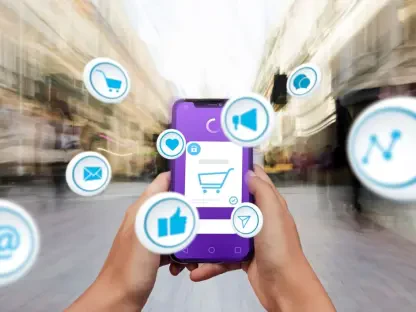As we dive into the world of retail innovation and digital commerce, I’m thrilled to sit down with Zainab Hussain, an esteemed e-commerce strategist with deep expertise in customer engagement and operations management. With a proven track record of navigating the complexities of online retail, Zainab offers invaluable insights into how major players like Lowe’s are shaping the future of home improvement shopping. In this interview, we explore the driving forces behind Lowe’s recent sales growth, the impact of their digital strategies, the role of innovative tools like AI virtual assistants, and how loyalty programs are transforming customer behavior.
Can you break down the main drivers behind Lowe’s 3.2% total sales growth in Q3, reaching $20.81 billion?
Absolutely, Olivia. Lowe’s sales growth in Q3 was fueled by a combination of factors. Strong performance in online channels played a significant role, alongside larger purchases by customers, especially Pro clients and appliance buyers. The average order value also rose by 3.4%, reflecting both bigger ticket items and slight price increases. However, we saw a dip in October sales by 2.6% compared to last year, largely due to lower storm-related demand. It’s a testament to how Lowe’s is balancing diverse revenue streams even amidst fluctuating external factors.
How has the double-digit growth in online sales, up 11.4% year over year, been achieved?
The surge in online sales comes down to a few strategic moves. Increased web traffic has been a major boost, paired with improved conversion rates on lowes.com and their mobile app. Lowe’s has focused on making the digital experience seamless for both DIY and Pro customers, ensuring they can find products quickly. Additionally, the expansion of Lowe’s Marketplace has broadened their online assortment, offering everything from budget to premium options without the burden of holding inventory, which attracts a wider customer base.
What can you tell us about the ‘Pro extended aisle’ feature and how it’s influencing sales?
The ‘Pro extended aisle’ is a game-changer for Lowe’s Pro customers. It’s essentially a direct link to supplier systems, allowing sales associates to access and sell from supplier catalogs with delivery straight to job sites. This expands the product range and delivery options for larger orders significantly. It’s not just about variety—it’s about efficiency and meeting the specific needs of professionals, which has led to positive feedback and stronger sales in the Pro segment.
How is the MyLowe’s Rewards loyalty program shaping customer shopping patterns?
The loyalty program is a cornerstone of Lowe’s customer retention strategy. Members of MyLowe’s Rewards shop twice as often as non-members and spend over 50% more per transaction. This isn’t just a numbers game—it shows how personalized incentives and rewards create a stronger connection with the brand. It drives repeat visits and higher basket sizes, which are critical for sustained revenue growth and building a loyal customer base.
Can you elaborate on how generative AI tools like Mylow and Mylow Companion are enhancing the customer experience at Lowe’s?
Certainly. Mylow and Mylow Companion are virtual assistants handling nearly a million customer questions monthly. They tackle everything from product inquiries to project advice, simplifying decision-making. Customers engaging with Mylow convert at over double the rate of those who don’t, which shows how AI streamlines the shopping journey. In-store, Mylow Companion boosts employee interactions, leading to a 2% higher satisfaction score among customers. Every interaction also feeds into proprietary models, continuously refining the AI’s accuracy and expertise.
What’s your forecast for the future of AI in retail, especially in the context of home improvement shopping?
I believe AI will become even more integral to retail, particularly in home improvement. We’re moving toward agentic commerce, where AI doesn’t just assist but anticipates customer needs, personalizing interactions at scale. For Lowe’s and similar retailers, this means deeper integration of AI across online and in-store experiences, enhancing everything from product discovery to project planning. It’s about meeting customers exactly where they are, and I expect we’ll see more innovative tools emerge that make shopping not just easier, but truly intuitive over the next few years.









